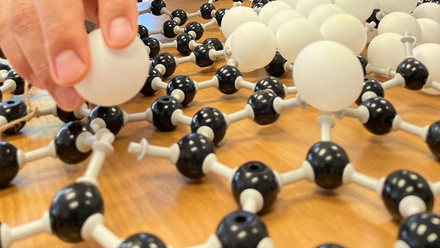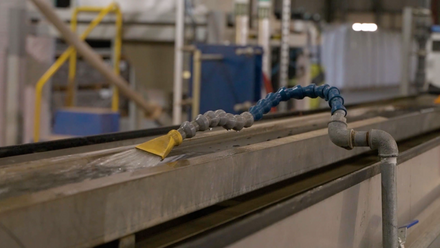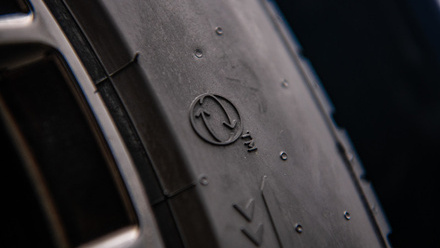Let’s get critical about critical materials
Isabella Stephens and Professor Emma Kendrick FIMMM at the University of Birmingham, UK, emphasise why we need to be smarter in our approach to critical materials.

Society has to get smarter about how it uses its finite mineral resources. We have entered a critical era for energy, both for policy and for minerals.
Previous eras of human society have taken their name from the key material used – Stone Age, Bronze Age, Iron Age. Now a transition from ‘oil age’ to an ‘elemental age’ is occurring.
Moving towards renewable energy generation relies heavily upon a collection of key materials and minerals that will shape geopolitics and human civilisation in this era. If we want this age to be defined by our smart use of these minerals, rather than their shortage, then we need to treat them as if they are critical. It is our smart and holistic use of minerals that will define the energy transition.
Building electric vehicles (EVs), solar panels, wind turbines and other transformative fossil-free technology will require vast amounts of technical metals. These include lithium, transition metals such as nickel and cobalt, as well as graphite, silicon and phosphorus, all used in batteries and rare-earths.
Benchmark Mineral Intelligence forecasts that at least 384 new mines are needed by 2035 to meet battery material demand for EV and stationary storage. It takes on average 15 years for a mine to reach a point of productivity. Here, in 2023, we can foresee that demand will rapidly outstrip supply.
The EU releases a list of key critical minerals every three years, showing legislative awareness around the impending shortfall. What is missing, however, is policy that ensures the use of critical minerals reflects their criticality.
While recent news of a new gigafactory in Somerset, UK, for Tata Motors is exciting for our national battery industry, we need to ensure that it does not just represent the ‘green capitalist’ theory that we can simply electrify business as usual. Instead, we need radically reformed global systems to prioritise the needs of communities over profit, and to ensure that we do not ever reach a point where there simply aren’t enough available critical minerals.
For example, if we consider luxury electric sports utility vehicles (SUVs) and electric trucks, with their larger and more energy-dense battery packs, they have been reported to use up to ~24kg of lithium in one pack. A standard EV in comparison has an average 40kWh battery pack containing 8kg of lithium, and an electric bike 0.02kg of lithium for 0.5kWh. It is therefore sensible to challenge the production and ownership of large SUVs and consider alternative ownership models, sizes of EV battery packs and encourage different modes of transport.
The scale of this transport challenge is enormous, with between eight and 11 million hybrid or electric vehicles expected on UK roads by 2030. A whitepaper from Exawatt highlights that either EV sales projections are not going to be met, or the average battery pack must shrink, purely due to the global lithium supply.
This offers a chance to fundamentally ask what we need from transport and whether single occupancy car journeys or even car ownership are really viable long term. To facilitate change, policies are needed to ensure minerals are being used in the most resource-efficient manner, moving the most people per mile, for the least quantity of critical mineral.
We are in an age of abundance. Worldwide, more than one billion plastic water bottles are sold every minute, and we consume 400% more textiles items a year than we did two decades ago, designed to last one season rather than years.
One million disposable vapes are thrown away in the UK each week. This is vastly unsustainable.
Any policy, including energy, that considers critical minerals will only be effective if it addresses both supply and demand. For global energy use, a study published in Ecological Economics reports that the most affluent 10% of the world’s population uses nearly three times as much energy per year compared to the least affluent 30%. As the world electrifies, this will additionally translate into a minerals inequality with parts of the population using vastly more critical minerals.
Indeed, often the countries that provide the minerals are those with the least access to using them. For example, the Democratic Republic of Congo (DRC) produces around 70% of the current global production of cobalt, and yet its average energy use in a year per capita is 411kWh, and only 19% of the population have access to electricity. This compares to 30,098kWh for the UK, which currently produces 0% of the world’s cobalt. It is important that the value of the cobalt mineral is not stripped from the DRC to electrify companies, without also investing in its infrastructure and improving conditions.
The definition of sustainability, according to the Oxford English Dictionary, is the “avoidance of the depletion of natural resources in order to maintain an ecological balance”, meaning that there needs to be a balance between environment, economy and equity. Consumption of minerals and energy in the richest parts of the world has to change. It is time to reconsider what our needs are as societies and meet them before allowing over-consumption.
To ensure supply and longevity of minerals for this energy transition, a more holistic approach to sustainability is required. An equitable transition would prioritise building batteries for mini-grids from the DRC cobalt and providing electrification to rural areas in the country, over building huge cars out of a finite and precious resource. This could be facilitated by policy agreements that necessitate extraction needing a social payback to enable more just consumption of minerals.
Did you know?
Capping the battery pack size in a car to 54kWh could reduce the US’ lithium demand by up to 42% by 2050.Source: Climate and community, Achieving Zero Emissions with More Mobility and Less Mining, January 2023
The move towards more holistic thinking can be seen in the EU Battery Passport, where recycling and reuse is being encouraged, with targets for recycled content in batteries suggested for 2030 and beyond – a minimum of 16% cobalt and 6% nickel.
Meanwhile, stationary storage within national infrastructure will be needed to give the grid the required resilience to be entirely fossil-fuel-free, and will be a key component of any stable net-zero nation. Some energy storage, particularly pumped hydropower and newer innovations like sand batteries, do not require as many critical minerals. However, for nations that do not have the geography to allow this to be a major energy store, critical minerals will give their electricity grid resilience to handle ebbs and flows in demand and supply of wind and sun. Meeting daily needs first, such as food, liveable building temperatures and commuting, with luxuries second will democratise critical minerals, and not purely sell to the highest bidder.
Criticality is fundamentally an economic measure that accounts for supply chain risk and economic importance. However, it is a good starting measure to question our use of finite resources, and take into consideration the conditions of the supply chain. There is a huge amount of scope to establish best practices and policies to ensure an equitable and sustainable elemental era.
We need to be smart about technology fixes chosen, and look at critical mineral policy as well as smart technology. One technology will not suit all applications. We have an opportunity now to bring in a respect for the criticality of minerals, to diversify our technology uses, and make our systems more resilient and less reliant on a few scarce supplies. This would all translate to a better quality of life for the majority of the population, and a curb only to the richest few. How we choose to use our limited supply will be as critical as the minerals themselves.







